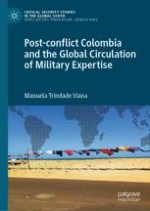2022 | OriginalPaper | Buchkapitel
3. The Success and Its Monsters: Disputing the Metrics, Dodging Criticism
verfasst von : Manuela Trindade Viana
Erschienen in: Post-conflict Colombia and the Global Circulation of Military Expertise
Aktivieren Sie unsere intelligente Suche, um passende Fachinhalte oder Patente zu finden.
Wählen Sie Textabschnitte aus um mit Künstlicher Intelligenz passenden Patente zu finden. powered by
Markieren Sie Textabschnitte, um KI-gestützt weitere passende Inhalte zu finden. powered by
